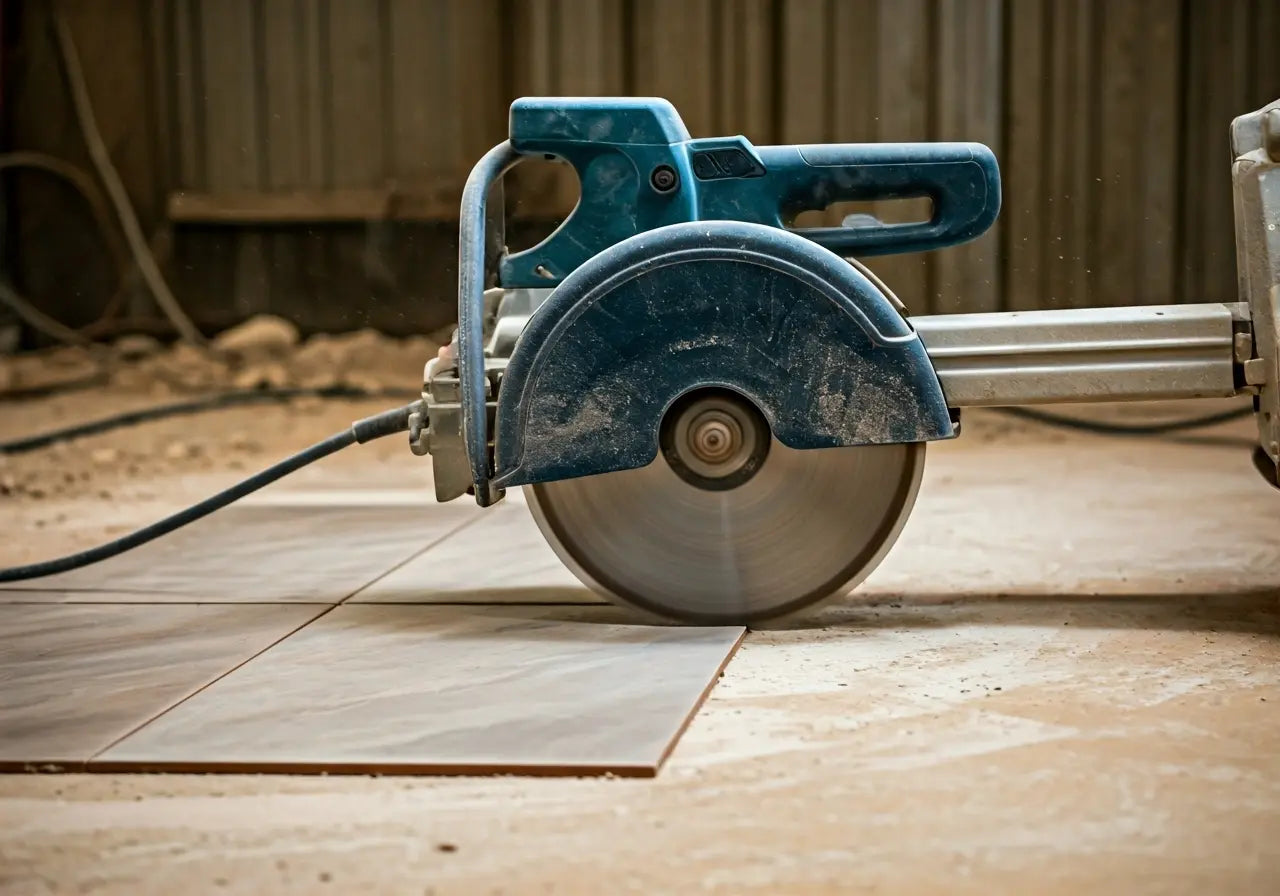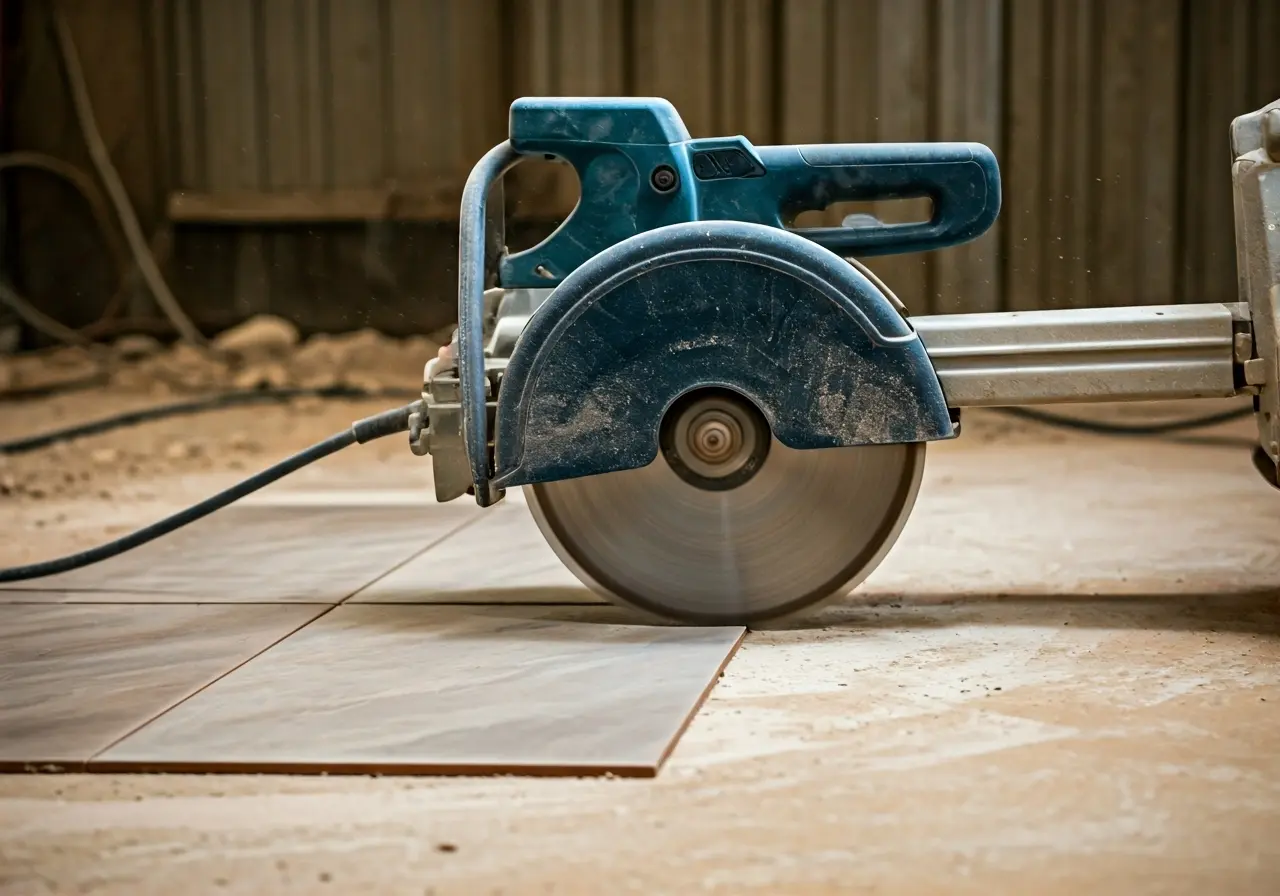Using a tile saw efficiently can make all the difference in achieving smooth, precise cuts. Whether you’re a DIY enthusiast or a seasoned professional, understanding the nuances of tile saw operation is key. In this blog, we’ll guide you through expert tips and techniques to master your tile saw and elevate your tiling projects.
Understanding the Basics of Tile Saws
Before diving into advanced techniques, it’s essential to understand what a tile saw is and how it operates. Tile saws are specifically designed to cut through ceramic, porcelain, and stone tiles with precision. Familiarizing yourself with the components and functionality of your tile saw will set the foundation for mastering smooth cuts.
Tile saws come in a variety of designs, but most feature a diamond blade that is cooled by water, which reduces friction and minimizes dust. The water keeps the blade and tile cool, preventing cracks and chips while extending the life of the blade. Understanding the balance between water flow, blade rotation speed, and pressure applied to the tile is crucial and can be learned with practice. Regular maintenance, such as cleaning the water tray and checking the motor, contributes to the longevity and reliability of the tool.
Selecting the right tool and knowing its capabilities can dramatically influence your tiling outcomes. For instance, a handheld wet tile saw is great for smaller projects and offers mobility in tight spaces, while a table tile saw provides stability and accuracy for larger tiles. Understanding these distinctions ensures you’re using the right tool for your specific project needs, allowing for greater precision and efficiency.
Choosing the Right Blade for Your Project
Selecting the appropriate blade is crucial for making clean cuts. Different tiles require different blades, so it’s important to match the blade to the material you’re cutting. Diamond blades are a popular choice for their durability and precision. Ensure the blade is sharp and suitable for the tile thickness and material.
The right blade not only enhances the quality of the cut but also ensures safety and efficiency. For instance, a continuous rim blade is excellent for wet cutting of porcelain tiles, providing a smooth finish with minimal chipping. Turbo rim blades, on the other hand, are suitable for both wet and dry cutting and can handle a variety of materials.
Regularly inspecting and replacing worn-out blades can prevent costly mistakes and damage to both the saw and tiles. It’s advisable to also consider the thickness and diameter of the blade relative to your tile size and hardness to ensure optimal performance. Investing in high-quality blades will pay off in the form of cleaner cuts and less material wastage.
Setting Up Your Workspace
A well-organized workspace can enhance safety and efficiency. Ensure your tile saw is placed on a stable surface with ample space to maneuver the tiles. Keep tools and materials within reach, and maintain a clean area to avoid any hazards during operation.
Lighting is another factor that should not be overlooked. Adequate lighting allows you to see the tile’s cutting line clearly and avoid mistakes. Additionally, positioning your workspace in a well-ventilated area helps to mitigate any dust that might escape from the cutting process. Even minimal exposure to tile dust can be harmful over time.
Before starting, position your saw in a way that its power cord and water supply do not create tripping hazards. Make sure all cords are safely tucked away and that the water source is nearby, yet positioned to avoid any splashing onto the electrical components. Your goals should include creating an ergonomic setup that minimizes physical strain while maximizing productivity.
Perfecting Your Cutting Technique
Achieving smooth cuts requires a steady hand and the right technique. Align the tile carefully and guide it slowly through the blade. Maintain consistent pressure to avoid chipping or breaking the tile. Practice makes perfect, so take your time to develop a comfortable and controlled cutting method.
It’s important to begin each cut by gradually easing the tile into the blade, allowing the saw to gain traction before applying full pressure. This helps in preventing any sudden lurches or jolts that can cause splintering. A tip here is to mark the cutting line on the tile using a water-resistant marker, which helps in maintaining a straight and accurate cut.
Don’t forget to support the tile fully as it progresses across the cutting table. Unsupported sections may sag or tilt, leading to uneven cuts. Over time, you’ll learn the importance of rhythm and pace; rushing the process never yields precise results. Instead, focus on consistency to deliver a smooth and deliberate finish.
Troubleshooting Common Issues
At times, even experienced users encounter problems such as uneven cuts or excessive chipping. Understanding how to troubleshoot these issues can save time and materials. Check for blade wear, ensure proper water flow for cooling, and adjust the saw’s speed and pressure as needed.
If you’re facing blade wobble or vibration issues, it might be due to improper blade installation or a loose arbor nut. Always ensure that the blade is correctly mounted and snugly secured. Another frequent issue is misaligned cuts, often resulting from an improperly adjusted guide fence or slide tray. Regularly check and calibrate these components to maintain accuracy.
Prioritizing Safety Measures
Safety should always be your top priority when using a tile saw. Wear protective eyewear, gloves, and hearing protection. Ensure all safety guards are in place and functioning correctly. Stay focused and avoid distractions while operating the saw to prevent accidents.
It’s crucial to avoid wearing loose clothing or jewelry which may become entangled in the machinery. Long hair should be tied back securely. Always keep your hands clear of the path of the blade, using a push stick or guide if needed. Furthermore, ensure that the work area is well-lit and free from any clutter to prevent trips and falls.
Familiarize yourself with the saw’s emergency stop functions before starting, and never leave the saw unattended while it’s running. In addition to personal protective equipment, a first aid kit should be readily accessible in your workspace to address minor injuries, should they occur.
Achieving Precision with Every Cut
Mastering the use of a tile saw takes practice, patience, and the right techniques. By following the tips and advice shared in this blog, you’ll be well on your way to achieving flawless, smooth cuts that make your tiling projects stand out. Remember, the right preparation and a focus on safety can lead to exceptional results every time. For more resources and support on tile saw usage, visit our homepage.






اترك تعليقًا
This site is protected by hCaptcha and the hCaptcha Privacy Policy and Terms of Service apply.